
The Enchanting Charms of Le Marais
Discover the historic charm and modern vibrancy of Le Marais, Paris' captivating neighborhood filled with art, culture, and culinary delights.
Nestled in the heart of Paris, Le Marais is a captivating blend of history, culture, and modernity. This historic district, which dates back to the 12th century, offers a delightful mix of narrow medieval lanes, grand aristocratic mansions, and vibrant boutiques. Steeped in history, Le Marais is home to some of Paris' finest architecture, including the Musée Carnavalet and the Place des Vosges, the oldest planned square in Paris. In addition to its historical allure, Le Marais is known for its thriving arts scene, with numerous galleries and museums showcasing contemporary art. Le Marais is also a haven for food enthusiasts, offering a plethora of dining options ranging from traditional French bistros to trendy cafes and gourmet food shops. The area is particularly famous for its Jewish Quarter, where you can sample some of the best falafel in the city on Rue des Rosiers. As you wander through the streets, you'll discover the neighborhood's unique blend of old and new, with historic buildings housing modern boutiques and trendy bars. Whether you're a history buff, art lover, or foodie, Le Marais has something to offer everyone. Its central location makes it a perfect base for exploring other parts of Paris, while its rich cultural heritage and vibrant atmosphere ensure that there's always something new to discover. From its charming streets to its eclectic mix of shops and eateries, Le Marais is a must-visit destination for any traveler to Paris.
Local tips in Le Marais
- Visit the Musée Carnavalet to learn about the history of Paris and Le Marais itself.
- Try the famous falafel at L'As du Fallafel on Rue des Rosiers.
- Stroll through the Place des Vosges, a beautiful and historic square perfect for relaxation.
- Explore the district's many art galleries and contemporary art museums.
- Take your time to wander the narrow streets and discover hidden gems, like boutique shops and quaint cafes.
The Enchanting Charms of Le Marais
Nestled in the heart of Paris, Le Marais is a captivating blend of history, culture, and modernity. This historic district, which dates back to the 12th century, offers a delightful mix of narrow medieval lanes, grand aristocratic mansions, and vibrant boutiques. Steeped in history, Le Marais is home to some of Paris' finest architecture, including the Musée Carnavalet and the Place des Vosges, the oldest planned square in Paris. In addition to its historical allure, Le Marais is known for its thriving arts scene, with numerous galleries and museums showcasing contemporary art. Le Marais is also a haven for food enthusiasts, offering a plethora of dining options ranging from traditional French bistros to trendy cafes and gourmet food shops. The area is particularly famous for its Jewish Quarter, where you can sample some of the best falafel in the city on Rue des Rosiers. As you wander through the streets, you'll discover the neighborhood's unique blend of old and new, with historic buildings housing modern boutiques and trendy bars. Whether you're a history buff, art lover, or foodie, Le Marais has something to offer everyone. Its central location makes it a perfect base for exploring other parts of Paris, while its rich cultural heritage and vibrant atmosphere ensure that there's always something new to discover. From its charming streets to its eclectic mix of shops and eateries, Le Marais is a must-visit destination for any traveler to Paris.
Iconic landmarks you can’t miss
Place des Vosges
Explore the historic beauty and vibrant atmosphere of Place des Vosges, a must-visit park in the heart of Paris, rich in art and architectural splendor.

Square du Temple - Elie Wiesel
Discover the serene beauty of Square du Temple - Elie Wiesel, a tranquil city park in Paris' Marais district, perfect for relaxation and exploration.

Gardens of the National Archives
Discover tranquility at the Gardens of the National Archives in Paris, where history and nature intertwine in a picturesque urban oasis.

Rosiers Joseph Migneret Garden
Discover the tranquil beauty of Rosiers Joseph Migneret Garden, a hidden gem in Paris offering serene landscapes and historical charm.

Le Marais
Discover the charm of Le Marais, a historical district in Paris filled with architectural beauty, cultural richness, and vibrant local life.

Square Georges-Cain
Experience tranquility at Square Georges-Cain, a lush garden in the Marais district of Paris, perfect for relaxation and artistic exploration.
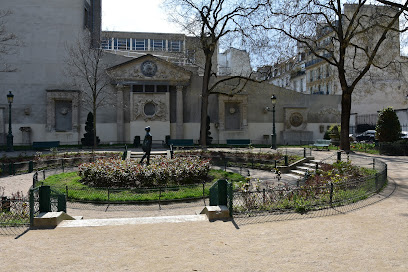
Square Charles-Victor Langlois
Experience the tranquility of Square Charles-Victor Langlois, a peaceful urban park in the heart of Paris perfect for relaxation and exploration.

Place Jean Marais
Explore the enchanting Place Jean Marais, a historical landmark in Paris, where culture, art, and beauty converge in a picturesque setting.

Le Mur des justes
Explore Le Mur des Justes, a poignant memorial in Paris honoring those who bravely resisted persecution during the Holocaust.

Statue d'Étienne Marcel
Explore the enchanting Statue d'Étienne Marcel, a stunning sculpture commemorating a key figure in Parisian history, along the picturesque Seine River.

Enceinte de Philippe Auguste
Discover the Enceinte de Philippe Auguste, a historical landmark that tells the story of medieval Paris and showcases the city's rich architectural heritage.

Tower Philippe Auguste
Explore Tower Philippe Auguste, a captivating historical landmark in Paris, and delve into the city's rich medieval heritage.

Old Wall of Paris
Explore the Old Wall of Paris, a historical landmark that narrates the city's rich past and architectural heritage amidst the charm of the City of Light.

Le Grand Assistant
Discover the artistic charm of Le Grand Assistant in Paris, an enchanting tourist attraction filled with culture and vibrant local experiences.

Tour du Temple emplacement historique
Explore the rich history of the Tour du Temple, a historic landmark in Paris that tells tales of the city's royal past and architectural marvels.
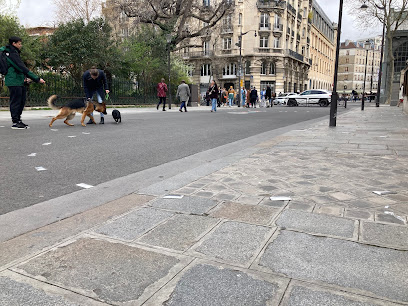
Unmissable attractions to see
Place des Vosges
Explore the historic charm of Place des Vosges, Paris's oldest square, surrounded by exquisite architecture, lush greenery, and vibrant culture.

Musée National Picasso-Paris
Discover the legacy of Pablo Picasso at Musée National Picasso-Paris, a must-visit art museum in the heart of Paris showcasing his masterpieces and rich history.

Maison de Victor Hugo
Discover the life and legacy of Victor Hugo in his historic Paris home, a hub of literary history and stunning architecture in the heart of the city.

Mémorial de la Shoah
Explore the Mémorial de la Shoah in Paris, a poignant museum dedicated to Holocaust remembrance and education, offering a profound historical experience.

National Archives Museum - Hôtel de Soubise
Explore the National Archives Museum in Paris, a historical landmark showcasing France's rich heritage and stunning architecture.

Museum of the Art and History of Judaism
Discover the rich tapestry of Jewish culture at the Museum of the Art and History of Judaism in Paris, featuring exquisite artifacts and captivating exhibitions.

Rosiers Joseph Migneret Garden
Discover the tranquility of Rosiers Joseph Migneret Garden, a beautiful city park in Paris's historic Marais district, perfect for relaxation and scenic strolls.

Rainbow crossing
Experience the vibrant Rainbow Crossing in Paris' Marais district, a colorful symbol of diversity and creativity that captures the essence of the city.

Le Mur du Marais
Explore the vibrant street art at Le Mur du Marais, a dynamic tribute to urban creativity in the heart of Paris's historic Marais district.

Essential places to dine
EATALY
Experience the best of Italian cuisine at EATALY in Paris—where culinary passion meets authentic flavors in a vibrant food court setting.

Au Bourguignon du Marais
Discover the essence of French culinary tradition at Au Bourguignon du Marais in Paris' historic Marais district.

Le Colimaçon
Discover Le Colimaçon: An enchanting French restaurant in Paris's Marais district, where traditional cuisine meets inviting ambiance.

Le Trésor
Experience authentic French cuisine at Le Trésor, a charming bistro nestled in the heart of Paris offering exquisite dishes and warm hospitality.

Salento Marais
Experience authentic Italian cuisine in Paris at Salento Marais - where every dish tells a story of tradition and flavor.

Salōn Marais
Experience the vibrant flavors of Mediterranean cuisine at Salōn Marais in Paris - where Israeli and Middle Eastern dishes delight every palate.

Des Gars dans la Cuisine
Experience exquisite French-Mediterranean cuisine at Des Gars dans la Cuisine – where every dish is a culinary masterpiece.

Dessance
Experience the art of French haute cuisine at Dessance, where innovative vegetarian dishes meet classic elegance in the heart of Paris.

Artisan de la Truffe Marais
Discover the exquisite flavors of truffles at Artisan de la Truffe Marais in Paris—an unforgettable culinary adventure awaits.

BAFFO
Discover the exquisite blend of Haute French and Tuscan cuisine at BAFFO, where every dish is a celebration of flavor and artistry.

Markets, malls and hidden boutiques
Uniqlo
Discover stylish and affordable fashion at Uniqlo in Paris, your go-to destination for men, women, and children's clothing.

Nature and Discoveries
Explore Nature and Discoveries in Paris: A Unique Gift Shop Offering Eclectic Finds and Eco-Friendly Treasures.

Soi Paris- Boutique Marais
Explore Soi Paris: A Boutique Gem in Marais Offering Unique Fashion and Lifestyle Treasures for Every Traveler.
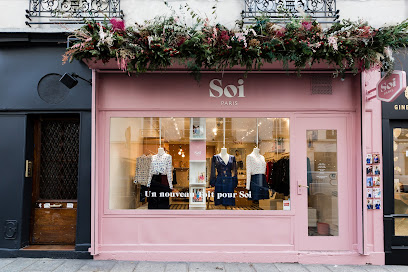
Miss Jeanne Marais
Experience the essence of Parisian style at Miss Jeanne Marais, where unique fashion and accessories await in the heart of the Marais district.

LECLAIREUR SEVIGNÉ
Experience the pinnacle of high-end fashion at LECLAIREUR SEVIGNÉ, a luxurious clothing store in the heart of Paris.

Boutique Maison Labiche - Marais
Explore the stylish offerings at Boutique Maison Labiche in the heart of Paris's Marais district, where fashion meets Parisian charm.

Les Stocks du Marais
Discover the chicest women's clothing boutique in Paris, Les Stocks du Marais, where style meets affordability in the heart of the Marais district.

Boutique Éphémère Marais - Pop Up Store Charlot
Discover the heart of Parisian creativity at Boutique Éphémère Marais, where local art meets unique fashion in a vibrant pop-up experience.
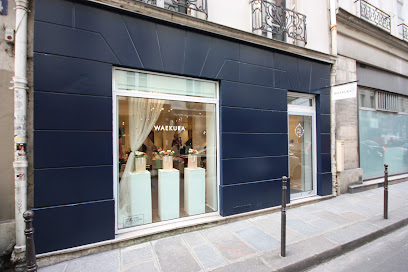
Boutique Ephémère Marais
Discover a unique blend of art and fashion at Boutique Ephémère Marais, your gateway to local creativity in the heart of Paris.
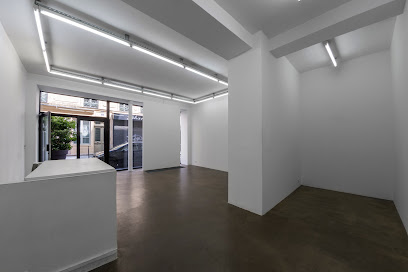
Marais
Discover the stylish Marais district, a fashionable haven in Paris, filled with eclectic boutiques, historic charm, and vibrant culture.
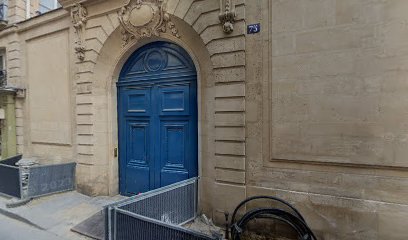
Essential bars & hidden hideouts
Little Red Door
Experience the magic of Paris at Little Red Door, where innovative cocktails and a cozy atmosphere await your visit.

Le Barav
Explore the rich flavors of France at Le Barav, a cozy wine bar in Paris offering a delightful selection of wines and small plates.

Le Mary Celeste
Experience the vibrant culinary scene at Le Mary Celeste, a stylish restaurant and cocktail bar in Paris, offering exquisite dishes and exceptional wines.
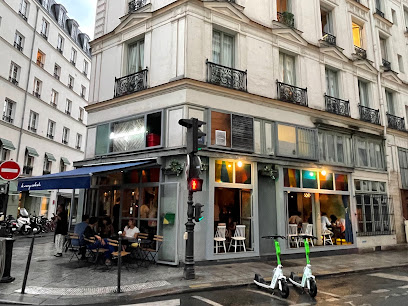
LIZARD
Experience the vibrant atmosphere of Lizard, a must-visit pub in Paris, offering delectable cocktails, gourmet burgers, and unforgettable nightlife.

Sherry Butt
Experience the vibrant cocktail culture of Paris at Sherry Butt, where classic meets contemporary in a stylish setting.

La Mezcaleria Paris
Experience authentic Mexican cocktails in a vibrant atmosphere at La Mezcaleria Paris, a beloved bar in the heart of the Marais district.

Yono Bar
Discover Yono Bar in Paris: A vibrant cocktail bar offering creative drinks and a lively atmosphere perfect for unwinding in the City of Light.

La Resistance
Experience the vibrant nightlife of Paris at La Resistance, a cocktail bar in the Marais with innovative drinks and a stylish ambiance.
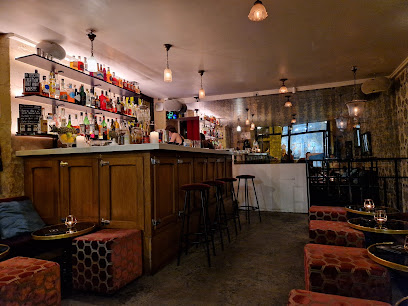
STOLLY'S
Discover Stolly's Bar in Paris: A lively spot for cocktails and socializing, perfect for experiencing the city's vibrant nightlife.

BUBAR
Experience the essence of Paris at BUBAR, a charming wine bar offering a curated selection of fine wines and a cozy atmosphere perfect for unwinding.

Local Phrases
-
- HelloBonjour
[bohn-zhoor] - GoodbyeAu revoir
[oh ruh-vwah] - YesOui
[wee] - NoNon
[nohn] - Please/You're welcomeS'il vous plaît/De rien
[seel voo pleh / duh ryehn] - Thank youMerci
[mehr-see] - Excuse me/SorryExcusez-moi/Désolé
[ex-kew-zay mwah / day-zoh-lay] - How are you?Comment ça va?
[koh-mohn sah vah] - Fine. And you?Bien. Et vous?
[byehn. ay voo] - Do you speak English?Parlez-vous anglais?
[par-lay voo ahn-glay] - I don't understandJe ne comprends pas
[zhuh nuh kohm-prahnd pah]
- HelloBonjour
-
- I'd like to see the menu, pleaseJe voudrais voir la carte, s'il vous plaît
[zhuh voo-dray vwar lah kart, seel voo pleh] - I don't eat meatJe ne mange pas de viande
[zhuh nuh mahnj pah duh vyand] - Cheers!Santé!
[sahn-tay] - I would like to pay, pleaseJe voudrais payer, s'il vous plaît
[zhuh voo-dray pay-ay, seel voo pleh]
- I'd like to see the menu, pleaseJe voudrais voir la carte, s'il vous plaît
-
- Help!Au secours!
[oh suh-koor] - Go away!Allez-vous en!
[ah-lay vooz ahn] - Call the Police!Appelez la police!
[ah-peh-lay lah pee-leece] - Call a doctor!Appelez un médecin!
[ah-peh-lay uh may-sahn] - I'm lostJe suis perdu(e)
[zhuh swee pair-doo] - I'm illJe suis malade
[zhuh swee mah-lahd]
- Help!Au secours!
-
- I'd like to buy...Je voudrais acheter...
[zhuh voo-dray ah-shuh-tay] - I'm just lookingJe regarde juste
[zhuh ruh-gard zhoost] - How much is it?Combien ça coûte?
[kohn-byen sah koot] - That's too expensiveC'est trop cher
[say troh shair] - Can you lower the price?Pouvez-vous baisser le prix?
[poo-veh voo bay-say luh pree]
- I'd like to buy...Je voudrais acheter...
-
- What time is it?Quelle heure est-il?
[kell ur ay eel] - It's one o'clockIl est une heure
[eel ay oon ur] - Half past (10)Dix heures et demie
[dees ur ay duh-mee] - MorningMatin
[mah-tan] - AfternoonAprès-midi
[ah-pray-mee-dee] - EveningSoir
[swahr] - YesterdayHier
[yehr] - TodayAujourd'hui
[oh-zhoor-dwee] - TomorrowDemain
[duh-mahn] - 1Un
[uhn] - 2Deux
[duh] - 3Trois
[twah] - 4Quatre
[kah-truh] - 5Cinq
[sank] - 6Six
[sees] - 7Sept
[sept] - 8Huit
[weet] - 9Neuf
[nuhf] - 10Dix
[dees]
- What time is it?Quelle heure est-il?
-
- Where's a/the...?Où est...?
[oo ay] - What's the address?Quelle est l'adresse?
[kell ay lad-rehs] - Can you show me (on the map)?Pouvez-vous me montrer (sur la carte)?
[poo-veh voo muh mohn-tray (sir lah kart)] - When's the next (bus)?Quand est le prochain (bus)?
[kahn ay luh proh-shahn (bus)] - A ticket (to ....)Un billet (pour ....)
[uhn bee-yay (poor)]
- Where's a/the...?Où est...?
History of Le Marais
-
Le Marais, which translates to 'the marsh,' was originally a swampy area in the early medieval period. Its transformation began in the 12th century when the area was drained for agriculture, paving the way for future development. The marshes attracted settlers who recognized the fertile land's potential.
-
During the Renaissance, Le Marais became the residence of the French nobility. Wealthy families built grand hôtels particuliers, or private mansions, which showcased intricate architectural styles and lush gardens. This trend transformed the neighborhood into a hub of culture and opulence, solidifying its status in Parisian society.
-
In the late 19th and early 20th centuries, Le Marais became home to a vibrant Jewish community, particularly along the Rue des Rosiers. The area flourished with Jewish shops, bakeries, and synagogues, contributing significantly to the cultural diversity of Paris. The neighborhood remains a central point for Jewish life in the city today.
-
The French Revolution in the late 18th century brought significant changes to Le Marais. Many aristocratic properties were confiscated, and the area became more accessible to the middle class. The revolution also encouraged the establishment of new civic spaces, including public squares and community centers, which altered the neighborhood's social fabric.
-
By the 1960s and 70s, Le Marais faced neglect and decline as industries moved out. However, a wave of restoration efforts began in the 1980s, with the government designating the area as a historic district. This revitalization spurred gentrification, attracting artists, designers, and affluent residents, while also preserving its rich architectural heritage.
Le Marais Essentials
-
Le Marais is centrally located in Paris, making it easily accessible from various neighborhoods. The closest metro stations are Saint-Paul (Line 1) and République (Lines 3, 5, 8, 9, 11). You can also take bus lines 75, 69, or 20 which have stops within the neighborhood. For those arriving from Charles de Gaulle Airport, the RER B train to Châtelet-Les Halles, followed by a short metro ride, is recommended.
-
Le Marais is best explored on foot, as many of its charming streets and hidden gems are pedestrian-friendly. The area is also well-served by public transport, including metro and bus services. Bicycle rentals are available through the Vélib' system, allowing you to enjoy the neighborhood at a leisurely pace. Taxis and rideshares like Uber are readily available for longer distances.
-
Le Marais is generally a safe neighborhood for tourists. However, standard precautions should be taken. Areas around the Place de la République can experience higher instances of petty crime such as pickpocketing, especially during crowded events. It is advisable to keep personal belongings secure and be vigilant, especially in tourist hotspots.
-
In case of an emergency, dial 112 for police, fire, or medical assistance. The nearest hospital is Hôtel-Dieu de Paris. It is recommended to have travel insurance covering medical emergencies. Pharmacies are widely available for minor health issues, and many have English-speaking staff.
-
Fashion: Do embrace Parisian style—think chic and understated. Avoid overly casual clothing, especially in upscale venues. Religion: Do respect local customs, particularly in historic churches. Cover your shoulders when visiting religious sites. Public Transport: Do offer your seat to the elderly and disabled. Don’t eat or drink on the metro. Greetings: Do greet with 'Bonjour' and a smile. Don't skip the greeting, as it is considered rude. Eating & Drinking: Do try local pastries and wines. Don’t rush your meal; dining is a social experience in France.
-
To experience Le Marais like a local, visit the bustling Marché des Enfants Rouges, the oldest covered market in Paris, for fresh produce and delicious street food. Explore the numerous art galleries and boutiques off the main streets. Join a free walking tour to learn about the area's rich history. Lastly, try to engage in conversations with local shop owners—they often have fascinating stories and recommendations.
Trending Landmarks in Le Marais
-
Place des Vosges
-
Square du Temple - Elie Wiesel
-
Gardens of the National Archives
-
Rosiers Joseph Migneret Garden
-
Le Marais
-
Square Georges-Cain
-
Square Charles-Victor Langlois
-
Place Jean Marais
-
Le Mur des justes
-
Statue d'Étienne Marcel
-
Enceinte de Philippe Auguste
-
Tower Philippe Auguste
-
Old Wall of Paris
-
Le Grand Assistant
-
Tour du Temple emplacement historique
Nearby Cities to Le Marais
-
Things To Do in Versailles
-
Things To Do in Rouen
-
Things To Do in Amiens
-
Things To Do in Reims
-
Things To Do in Caen
-
Things To Do in Lille
-
Things To Do in Tours
-
Things To Do in Tournai
-
Things To Do in Mons
-
Things To Do in Ypres
-
Things To Do in Kortrijk
-
Things To Do in Dinant
-
Things To Do in Namur
-
Things To Do in Nieuwpoort
-
Things To Do in Louvain-la-Neuve













